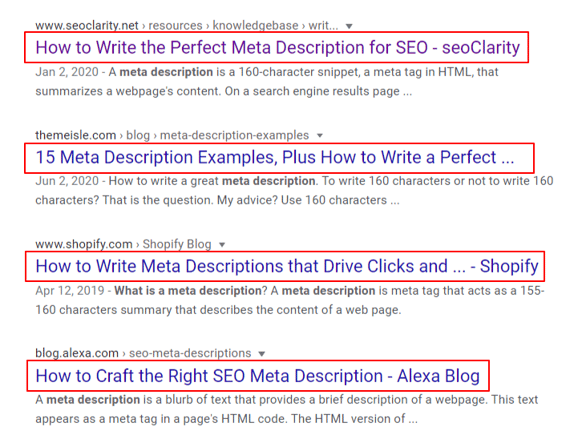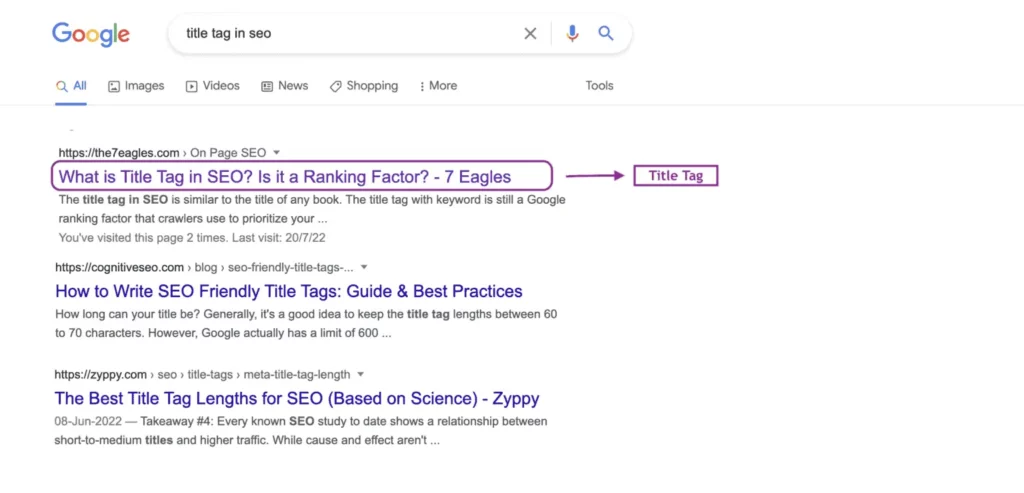Hello there, fellow content creator and aspiring digital wizard! Noah Evans here, lead content strategist at AskByteWise.com, where we believe complex tech doesn’t have to stay complex. Today, we’re diving deep into a seemingly small element that holds immense power in the world of search engines: the title tag. You might not think much about this tiny line of text, but trust me, mastering how to write SEO-friendly title tags that get clicks is one of the most impactful on-page SEO skills you can develop. It’s your website’s first impression, your digital handshake, and often, the deciding factor between a potential visitor choosing your link or scrolling past. Get ready to transform your understanding and start crafting titles that not only rank but also command attention.
What is a Title Tag and Why is it Crucial for SEO?
Let’s strip away the jargon and get to the heart of it. A title tag (technically <title>) is an HTML element that specifies the title of a web page. Think of it as the nameplate for your entire page. Where do you see it?
- Search Engine Results Pages (SERPs): This is the most critical place. It’s the clickable headline that appears in Google, Bing, and other search engines.
- Browser Tabs: When you have multiple tabs open, the title tag is what identifies each page.
- Social Media Shares: When someone shares your page on platforms like Facebook or X (formerly Twitter), the title tag often populates the share preview.
- Bookmarks: When you bookmark a page, the title tag is usually the default name saved.
Why This Tiny Tag Holds Enormous Power for SEO
The title tag isn’t just for show; it’s a vital communication tool for both users and search engines.
-
First Impression & Click-Through Rate (CTR): Imagine two identical books. One has a dull, generic title. The other has an intriguing, problem-solving title. Which one would you pick up? Your title tag is that book cover. A compelling, relevant title tag directly impacts your click-through rate (CTR) – the percentage of people who see your link and decide to click it. A higher CTR signals to Google’s algorithms that your content is highly relevant and valuable, which can positively influence your rankings.
-
Relevance Signal for Search Engines: When Google’s crawlers visit your page, the title tag is one of the first things they look at to understand what your page is about. It helps them index your content correctly and match it with relevant search queries. Including your primary target keyword in your title tag is a strong signal of your page’s topic.
-
User Experience (UX): A well-crafted title tag sets clear expectations. Users who click your link because the title accurately describes the content are more likely to find what they’re looking for, leading to a better user experience and potentially lower bounce rates. This, in turn, can be a positive ranking factor.
-
E-E-A-T Signal: Believe it or not, your title tag also contributes to your website’s E-E-A-T (Experience, Expertise, Authoritativeness, Trustworthiness). A professional, clear, and relevant title tag subtly communicates that you know your stuff. If your title promises a solution and your content delivers, you’re building trust with both users and search engines.
Expert Tip: Don’t confuse the title tag with the H1 heading. While they are often similar, the title tag is what appears in the browser tab and SERP, while the H1 heading is the main heading visible on the page itself. Both are crucial for SEO, but they serve slightly different purposes and should be optimized independently, though often aligned in topic.
Mastering the Art: Key Principles to Write SEO-Friendly Title Tags That Get Clicks
Now that we understand the “why,” let’s get into the “how.” Crafting effective title tags is an art form, blending SEO best practices with persuasive copywriting. Here are the core principles I follow.
1. Keyword Research is Your Foundation
Before you even think about writing a title, you need to know what words and phrases your audience is actually searching for. This is where keyword research comes in – it’s the bedrock of any successful SEO strategy.
- Identify Your Primary Keyword: For each page, pinpoint the single most important keyword or key phrase that accurately describes its main topic. This is your primary target. For this article, it’s “How to Write SEO-Friendly Title Tags That Get Clicks.”
- Discover Related Keywords (LSI Keywords): Beyond your primary keyword, find closely related terms that people also search for. These are your LSI (Latent Semantic Indexing) keywords or semantic keywords. Tools like Google Keyword Planner, SEMrush, Ahrefs, or even Google’s “People also ask” and “Related searches” sections can help you find these. For our topic, these might include “SEO title best practices,” “title tag character limit,” “improve CTR,” or “on-page SEO tips.”
- Analyze Search Volume & Competition: Look for keywords with a decent search volume (meaning enough people are searching for them) but not extremely high competition (unless you have a very authoritative site). Sometimes, targeting longer, more specific long-tail keywords can yield better results, especially for newer sites.
Expert Tip: Don’t just pick keywords; understand the intent behind them. Is the user looking for information, a product to buy, or a local service? Your title tag needs to speak directly to that intent.
2. Optimize for Search Intent
This is perhaps the most critical aspect of modern SEO. Google’s core mission is to provide the most relevant and helpful results for any given query. If your title tag doesn’t match what the user is truly looking for, they won’t click, or they’ll bounce immediately, signaling to Google that your page wasn’t a good fit.
- Informational Intent: If the user is asking “how to,” “what is,” or “guide to,” your title should reflect that. (e.g., “How to Write SEO-Friendly Title Tags That Get Clicks,” “What is SEO: A Beginner’s Guide”).
- Navigational Intent: If they’re looking for a specific website or brand (e.g., “AskByteWise Blog”), your title should clearly state your brand name.
- Commercial Investigation Intent: If they’re researching before a purchase (e.g., “best laptops for students,” “SEO tools review”), your title should promise a comparison or review.
- Transactional Intent: If they’re ready to buy (e.g., “buy running shoes online”), your title should emphasize products or services.
By aligning your title tag with search intent, you’re not just trying to trick the search engine; you’re genuinely helping users find what they need, which is the ultimate goal of helpful content.
3. Keep it Concise and Within Length Limits
Search engines don’t display endlessly long titles. They have character or pixel limits, after which your title will be truncated (cut off) with an ellipsis (…). While there’s no strict character limit set by Google, most SEOs aim for around 50-60 characters or roughly 512-580 pixels for optimal display on desktop. Mobile devices often display slightly less.
- Front-Load Your Keywords: Place your primary keyword as close to the beginning of your title tag as possible. This instantly signals relevance to both search engines and users.
- Be Descriptive, Not Redundant: Use every character wisely. Don’t repeat words unnecessarily.
- Prioritize Important Information: Make sure the most crucial information – your primary keyword and value proposition – is visible even if your title gets truncated.
Google Says: “Make sure every page on your site has a descriptive and unique title element. Titles are critical to giving users a quick insight into the content of a result and why that result is relevant to their query.” – Google Search Central Documentation
4. Make it Compelling: The Art of the Click
Even if your title is perfectly optimized for keywords and length, it won’t get clicks if it’s boring. This is where the copywriting aspect comes in.
- Promise a Benefit or Solution: What problem does your page solve? What value does it offer? (e.g., “Get Clicks,” “Boost Traffic,” “Solve [Problem]”).
- Use Power Words: Words that evoke emotion or urgency can increase CTR. (e.g., “Ultimate,” “Complete,” “Easy,” “Proven,” “Secret,” “Master,” “Guide,” “Fast,” “Free,” “Best”).
- Add Numbers/Dates (When Relevant): “10 Best SEO Tips for 2024,” “The Ultimate Guide: 7 Steps to SEO Success.” Numbers stand out in a list of text.
- Ask a Question (If Applicable): “Struggling with SEO? Learn How to Write SEO-Friendly Title Tags That Get Clicks.” This engages the user.
- Create Curiosity: Hint at something valuable without giving everything away.
- Avoid Clickbait: While you want to be compelling, don’t mislead users. Your title must accurately reflect the content of your page. Trustworthiness is key for long-term E-E-A-T.
5. Brand Consistency (When Appropriate)
For established brands, or when you want to build brand recognition, including your brand name at the end of the title tag is a common practice.
- Format:
Primary Keyword - Secondary Keyword | Your Brand Name- Example:
How to Write SEO-Friendly Title Tags That Get Clicks - AskByteWise
- Example:
- Consider Brand Strength: If your brand isn’t well-known yet, prioritize the keywords and value proposition. As your brand grows, adding your name can add a layer of authority and trustworthiness.
6. Avoid Keyword Stuffing
This is a classic rookie mistake. In an attempt to “game” the system, some people cram as many keywords as possible into their title tags. This is known as keyword stuffing, and it’s a major black-hat SEO tactic that can actually harm your rankings.
- Don’t:
Write SEO Titles, Best SEO Titles, SEO Titles That Get Clicks, Title Tag SEO, Clickable Titles, SEO Tags - Do: Focus on your primary keyword and perhaps one closely related secondary keyword, ensuring the title still reads naturally and makes sense to a human. Google’s algorithms are sophisticated enough to understand context and synonyms.
Step-by-Step: Crafting Your Perfect Title Tag
Let’s put these principles into action with a clear, numbered process.
-
Identify Your Page’s Core Topic and Goal: What is this page really about? What problem does it solve or information does it provide?
- Example: This page explains how to create title tags that rank well and get clicks.
-
Conduct Thorough Keyword Research:
- Find your primary keyword.
- Example: “How to Write SEO-Friendly Title Tags That Get Clicks”
- Identify 1-2 relevant secondary keywords or phrases.
- Example: “SEO title best practices,” “improve CTR”
- Find your primary keyword.
-
Determine User Search Intent: Are users looking for information, a product, a solution?
- Example: Users have informational intent; they want a guide or tutorial.
-
Draft Several Title Options: Don’t stop at the first idea. Play around with different phrasings.
- Option A (Keyword-focused): How to Write SEO-Friendly Title Tags That Get Clicks
- Option B (Benefit-focused): Boost Your Clicks: How to Write SEO-Friendly Title Tags
- Option C (Guide format): The Ultimate Guide: How to Write SEO-Friendly Title Tags That Get Clicks
- Option D (Question/Problem): Struggling for Clicks? Master SEO Title Tags!
-
Review for Length and Truncation: Use a SERP simulator tool (many are free online) to see how your titles will look in Google search results. Adjust as needed to stay within the 50-60 character sweet spot.
- Refinement: “The Ultimate Guide: How to Write SEO-Friendly Title Tags That Get Clicks” is 60 characters – perfect.
- Refinement: “Boost Your Clicks: How to Write SEO-Friendly Title Tags” is 54 characters – good.
-
Enhance with Power Words, Numbers, or Brand (Optional):
- If using Option C: “The Ultimate Guide: How to Write SEO-Friendly Title Tags That Get Clicks | AskByteWise” (74 chars, likely too long, brand might be cut off).
- Better: “The Ultimate Guide: How to Write SEO-Friendly Title Tags That Get Clicks” (60 chars, clear, strong).
-
Read Aloud and Get Feedback: Does it sound natural? Is it clear? Would you click it? Sometimes a fresh pair of eyes can spot improvements.
-
Implement and Monitor: Add the title tag to your page’s HTML in the
<head>section (or use your CMS like WordPress with a plugin like Yoast SEO or Rank Math). Then, monitor its performance in Google Search Console, paying attention to impressions, clicks, and average position. Be prepared to iterate and improve!
Tools of the Trade: Aiding Your Title Tag Creation
You don’t have to go it alone. Several tools can significantly streamline the process of how to write SEO-friendly title tags that get clicks.
1. Keyword Research Tools
These are indispensable for finding the right keywords and understanding their dynamics.
- Google Keyword Planner: Free (with a Google Ads account), excellent for finding related keywords and understanding search volume. It’s Google’s own data, so it’s highly reliable.
- SEMrush / Ahrefs: Premium, comprehensive tools that offer deep insights into keywords, competitor analysis, backlink profiles, and more. They can help you uncover high-potential keywords and analyze what your competitors are ranking for.
- Ubersuggest / KWFinder: More budget-friendly options that still provide valuable keyword suggestions, search volume, and difficulty metrics.
- Google Search (itself): Don’t underestimate the power of simply typing your target keyword into Google. Look at the “People also ask” section, “Related searches” at the bottom, and analyze the titles of the top-ranking results. This gives you direct insight into what Google considers relevant and what users are responding to.
2. SERP Simulators
These tools help you visualize how your title tag (and meta description) will appear in search results, allowing you to optimize for length and appearance.
- Yoast SEO / Rank Math (WordPress Plugins): These popular WordPress SEO plugins include built-in SERP previews right in your editor, making it incredibly easy to optimize on the fly.
- Free Online SERP Preview Tools: Many websites offer simple, free SERP simulators where you can type in your title and description to see how they render. Just search for “SERP preview tool” or “title tag checker.”
3. Analytics & Search Performance Tools
Once your title tags are live, these tools help you measure their effectiveness and identify areas for improvement.
- Google Search Console: Absolutely essential. It shows you which queries your pages are appearing for, how many impressions they’re getting, their CTR, and their average ranking position. This data is invaluable for identifying underperforming titles that need optimization.
- Google Analytics: Provides insights into user behavior after they click, such as bounce rate, time on page, and conversion rates. While not directly about title tags, it helps you understand if your title is attracting the right kind of clicks.
Common Mistakes to Avoid When Writing Title Tags
Even with all the best intentions, it’s easy to fall into common traps. Be aware of these pitfalls to ensure your efforts in how to write SEO-friendly title tags that get clicks don’t go to waste.
- Keyword Stuffing: We’ve covered this, but it bears repeating. It makes your title unreadable, looks spammy, and can hurt your rankings. Google prioritizes natural language.
- Too Long or Too Short: Titles that are too long get truncated, hiding crucial information. Titles that are too short miss opportunities to include important keywords and compelling language. Aim for that sweet spot of 50-60 characters.
- Duplicate Title Tags: Every single page on your website should have a unique, descriptive title tag. Duplicate titles confuse search engines and dilute your SEO efforts, signaling low-quality content or a lack of attention to detail. This is a major factor in on-page SEO audits.
- Irrelevant Titles: The title tag must accurately reflect the content of the page. If your title promises “The Best Pasta Recipes” but your page is about car maintenance, users will quickly bounce, and Google will notice this disconnect. This undermines your E-E-A-T.
- Generic or Vague Titles: Titles like “Home,” “About Us,” or “Products” are wasted opportunities. Be specific. Instead of “Products,” try “Eco-Friendly Cleaning Products for Your Home.”
- Neglecting Your Brand: If you have an established brand, or are trying to build one, omitting your brand name entirely can be a missed opportunity for recognition and trustworthiness, especially on branded searches.
- Ignoring User Intent: Writing a title that targets the wrong type of search intent (e.g., trying to sell a product with an informational keyword) will result in low CTR and high bounce rates, signaling poor relevance to Google.
- Forgetting to Update Old Titles: SEO is an ongoing process. Periodically review your older content’s title tags in Google Search Console. If they’re not performing well, update them! Algorithm updates can change what works best, and your content might have evolved.
Final Checklist: Your Roadmap to Click-Worthy Title Tags
Before you hit publish, run through this quick checklist to ensure your title tags are primed for success:
- Primary Keyword Included? (Ideally at the beginning)
- Secondary Keywords/LSI Terms Integrated Naturally?
- Within Length Limits? (50-60 characters, checked with a SERP simulator)
- Optimized for Search Intent? (Matches what users are looking for)
- Compelling and Click-Worthy? (Promises value, uses power words, avoids clickbait)
- Unique Across Your Site? (No duplicates)
- Accurately Reflects Page Content?
- Avoids Keyword Stuffing? (Reads naturally)
- Brand Name Included? (If appropriate and within length)
- Reviewed for Clarity and Impact?
By consistently applying these principles, you’re not just creating a title; you’re crafting a powerful signal that tells search engines and users exactly what they can expect – and why they should choose your content. This focused approach to on-page SEO will not only help you rank higher but, crucially, drive more engaged traffic to your valuable content.
Frequently Asked Questions (FAQ)
Q1: Does the title tag directly affect my search engine ranking?
A1: While Google rarely confirms direct ranking factors, the title tag is undoubtedly one of the most important on-page SEO elements. It strongly influences how search engines understand your page’s topic and relevance. More importantly, a well-optimized title tag significantly impacts your click-through rate (CTR) in the SERPs. A higher CTR signals to Google that your content is highly relevant and valuable to users, which can indirectly (and often directly) lead to improved rankings. Think of it as a crucial ingredient in your overall SEO strategy.
Q2: What’s the ideal character length for a title tag?
A2: There isn’t a strict “character limit” as Google actually measures in pixels. However, for practical purposes, most SEO experts recommend aiming for 50-60 characters. Beyond this, your title tag is likely to be truncated (cut off) with an ellipsis (…) in the search results, potentially hiding important information. Always use a SERP simulator tool to preview how your title will appear.
Q3: Should I include my brand name in every title tag?
A3: It depends on your brand’s recognition and the length of your title. For established brands, including your brand name (usually at the end, separated by a pipe | or hyphen -) can boost recognition and trust. For newer sites, it’s often better to prioritize your primary keywords and value proposition, especially if you’re struggling to stay within the character limits. The most important thing is that the title accurately describes the page content and contains your main keyword.
Q4: My old title tags aren’t performing well. Should I change them?
A4: Absolutely! SEO is an iterative process. If your current title tags are generic, too long, or not attracting clicks (check Google Search Console for low CTR on high-impression pages), updating them is a great strategy. Make small, data-driven changes, and monitor their performance. It might take a few weeks for Google to recrawl and re-evaluate your page, so be patient and observe the changes in impressions, clicks, and average position. This constant refinement is key to long-term SEO success and maintaining your site’s E-E-A-T.
Q5: How do title tags differ from meta descriptions?
A5: Both are crucial for your presence in the SERPs, but they serve different roles. The title tag is your primary headline, indicating the page’s main topic and driving clicks. It’s concise and keyword-focused. The meta description is a short paragraph (typically up to 150-160 characters) that appears below the title in search results. Its role is to provide a more detailed summary of the page’s content, further enticing users to click. While meta descriptions don’t directly influence rankings, they significantly impact CTR. Think of the title as the headline and the meta description as the supporting ad copy.
See more: How to Write SEO-Friendly Title Tags That Get Clicks.
Discover: AskByteWise.



